Introduction
The way we create and experience music is undergoing a revolutionary transformation. Advances in generative AI have enabled algorithms to compose music, not just assist with editing or mixing. Today’s AI models can craft entire songs – melodies, harmonies, lyrics, and instrumental arrangements – based on a short text prompt or even an image. For instance, one recent AI system produced a “credible, even moving” 15-second blues song given only the prompt “solo acoustic Mississippi Delta blues about a sad AI,” using ChatGPT to pen the lyrics and a generative model (Suno’s) to create the vocal and guitar audio. Such examples highlight the transformative power of generative systems: anyone with an idea can now summon rich musical content from the void, essentially “creating something new” on demand. What was once the domain of seasoned composers and producers is becoming accessible to hobbyists and tech enthusiasts, thanks to these AI-driven tools.
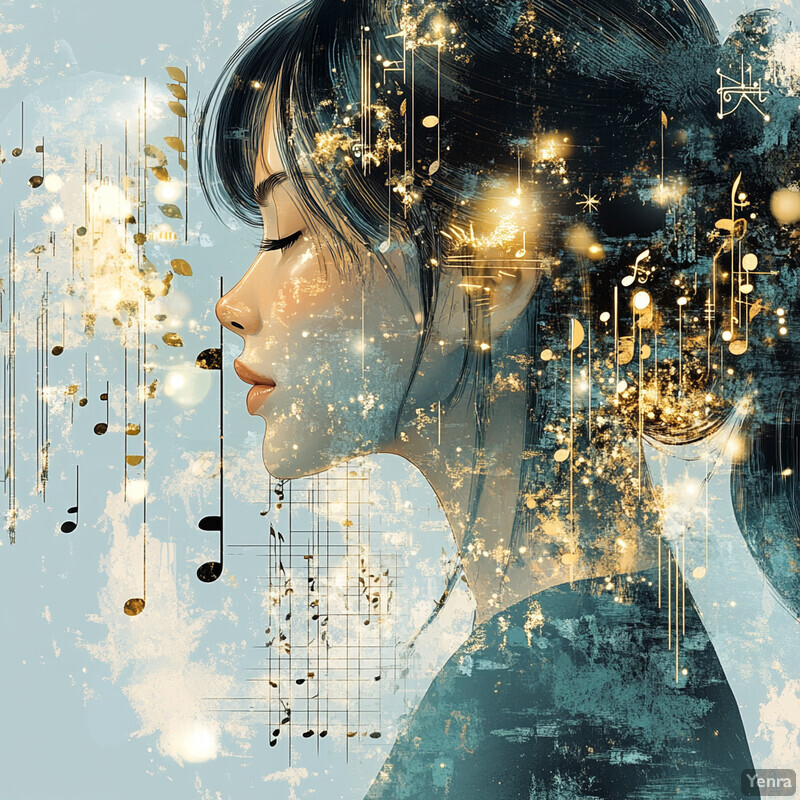
This article explores the emerging world of AI-generated music and sound design. We will trace the historical foundations of algorithmic composition from early pioneers like Iannis Xenakis and Koenig to the latest breakthroughs. We’ll demystify the technical foundations – how modern systems like transformers, diffusion models, and GANs actually generate music – and look at how platforms such as Suno structure musical data and guide their outputs. From there, we venture into the creative frontiers, highlighting how artists and sound designers are collaborating with AI in novel ways (with a focus on trends in 2023–2025, and some prompts you can try on Suno). We’ll also examine sound design innovations, where AI goes beyond writing notes to sculpt timbres, textures, and immersive ambiences. Of course, no discussion is complete without addressing the ethical considerations: questions of authorship, copyright, fair compensation, and creative control that have erupted alongside these technologies. Finally, we’ll speculate on future horizons – new musical forms, educational tools, and co-creative workflows that lie on the horizon – before concluding with reflections on how human intention and algorithmic imagination might harmonize in the compositions of tomorrow.
Generative AI in music stands at a crossroads of technology and art. Like a duet between human and machines, it envisions a future where the composer’s mind and an algorithm’s vast “imagination” work in tandem. Let's begin by looking back at how we arrived at this exciting juncture.
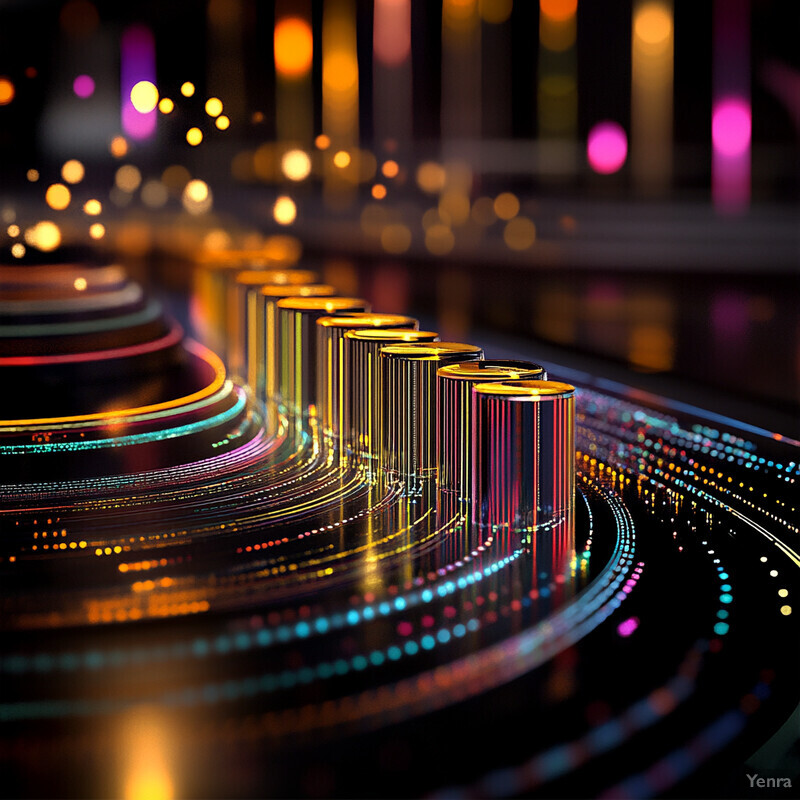
Historical Foundations
Algorithmic composition – using formal rules or procedures to generate music – is not a completely new idea. In fact, its roots stretch back centuries. As early as 1787, Wolfgang Amadeus Mozart devised a Musikalisches Würfelspiel (“musical dice game”) that allowed minuets to be composed by randomly selecting pre-written fragments based on dice rolls. This was a simple form of rule-based generation. Fast forward to the mid-20th century, and we encounter pioneers who took algorithmic composition into the realm of computing and mathematics.
One towering figure was Iannis Xenakis, an avant-garde composer and architect. Xenakis was a true visionary who “combined architecture, mathematics, music, and performance art to create avant-garde compositions”. He introduced stochastic music, applying probability theory and random processes to compose pieces with complex, chaotic sound masses. Using early computers and programming languages like FORTRAN, Xenakis was able to formalize his algorithms and generate music that was deeply mathematical in nature. His work (e.g. compositions like “Analogique” or later the graphical UPIC system) demonstrated that computers could be used creatively to explore sound in ways impossible to do by hand.
Around the same time, composer Lejaren Hiller and Leonard Isaacson made history with the Illiac Suite (1957), widely regarded as the first score composed by an electron. Working on the ILLIAC I computer at the University of Illinois, they programmed algorithms to generate a string quartet, effectively proving that a machine could assist in writing a classical piece. This achievement was a milestone that opened the door for further experiments throughout the 1960s and 1970s.
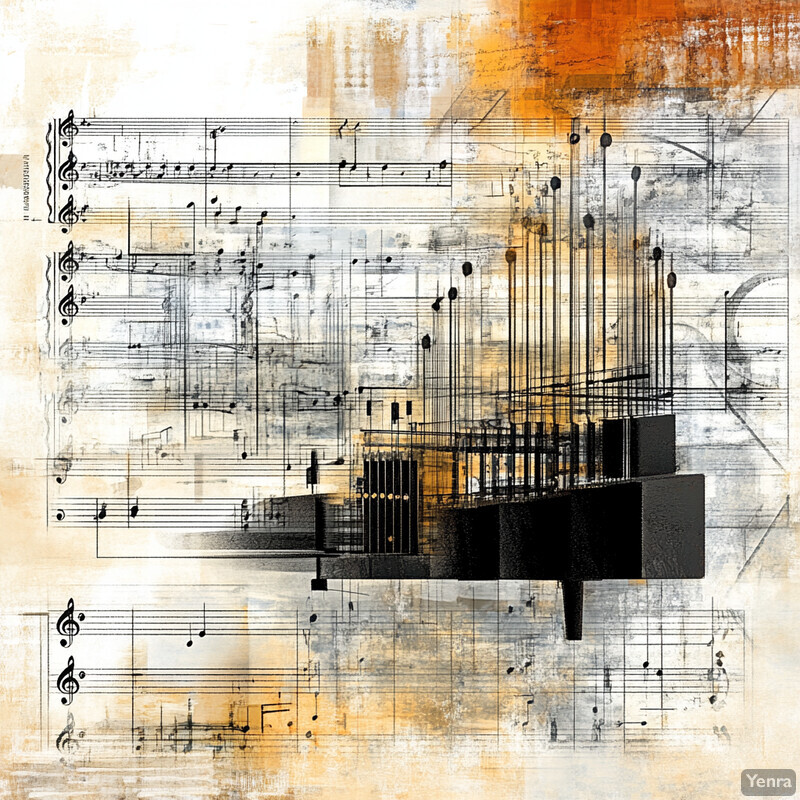
Another key contributor was Gottfried Michael Koenig, who in 1964 developed one of the earliest algorithmic composition programs (known as one of the first attempts to integrate computer algorithms with serial music theory). Koenig, along with others like composer Charles Ames, built sophisticated systems to algorithmically generate musical structures in those decades. These early systems were often rule-based: the programmers/composers hard-coded sets of rules or used random number generators to make compositional choices (for example, following formal rules of twelve-tone serialism or probability distributions for note selection). While these approaches could produce interesting results, they lacked the ability to learn or adapt – they would only do what they were explicitly programmed to do.
By the 1980s and 1990s, researchers began incorporating techniques from the field of artificial intelligence to make algorithmic composition more adaptive. One landmark effort was David Cope’s “Experiments in Musical Intelligence” (EMI). Cope’s software analyzed the works of classical composers and generated new pieces in those styles, raising early questions about c d authorship when a computer could churn out convincing “Bach-like” chorales or “Mozart-like” sonatas. EMI was still largely symbolic (producing scores/notation), but it used AI (expert systems and later Markov models) to capture musical style. In 1997, a different approach to AI music was showcased when IBM’s Deep Blue (a chess AI) was repurposed by composer Tod Machover to improvise music live with an orchestra, illustrating the era’s curiosity in combining AI decision-making with musical performance.
The late 1990s and early 2000s saw the first experiments with neural networks for music generation. Early neural models (such as simple recurrent neural networks) learned from examples of melodies to create new ones, though their outputs were often rudimentary and struggled to capture long-term musical structure. However, as computing power grew, so did model sophistication. The 2000s and 2010s brought deep learning into the picture, revolutionizing AI music generation. Researchers built neural nets that could understand nuanced patterns in music far better than any rule-based system. For example, Google’s Magenta project developed models like MusicVAE and Music Transformer that could generate melodies with long-term structure or interpolate between musical styles. OpenAI introduced MuseNet in 2019, a large neural network that could generate multi-instrument MIDI compositions in various genres, and in 2020 OpenAI’s Jukebox pushed boundaries further by generating raw audio for songs (complete with lyrics and singing) using a combination of neural networks (although Jukebox’s audio quality was raw and its process was computationally heavy).
In summary, there has been a clear evolution: from explicit rule-based algorithms (e.g. Xenakis’s stochastic formulas or Hiller’s programmed rules) to data-driven neural models that learn musical structure from large corpora of music. The former required human composers to encode their knowledge or creative strategies into the machine; the latter allows the machine to infer patterns directly from actual music data. This shift means modern AI composition tools encapsulate knowledge of thousands of songs within their neural weights, enabling them to produce music that is stylistically rich and varied – often “remarkably similar to those created by human composers,” as one overview noted. The historical continuum shows increasing sophistication and autonomy: from mechanical automata and dice games, through the first computer-composed pieces, to today’s AI that can jam in real-time or compose in any genre.
These historical foundations set the stage for what we have now: powerful algorithms that carry forward the ideas of those pioneers, amplified by modern machine learning. Next, we’ll delve into how these cutting-edge systems actually work under the hood.
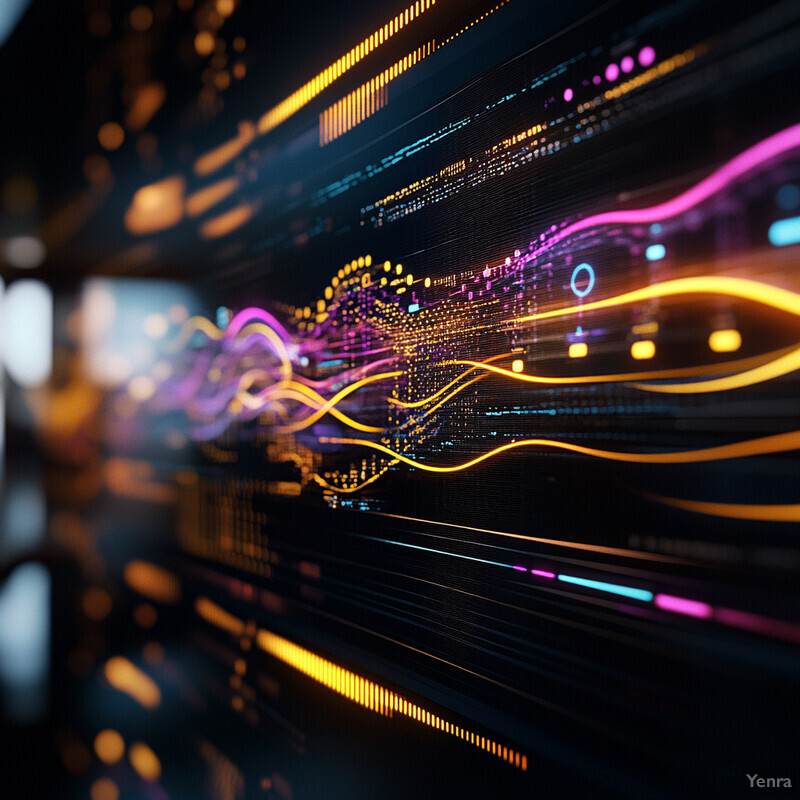
Technical Foundations
Today’s AI music generators are built on a few core machine learning architectures – notably transformers, diffusion models, and GANs (Generative Adversarial Networks) – often augmented by clever data representation techniques. Understanding these foundations (in an accessible way) can illuminate how a piece of software can “compose” a song.
Transformer Models: Transformers have caused a leap forward in AI music by handling long-range patterns in sequences. Just as a transformer-based model like GPT can generate a coherent essay by predicting one word after another, a music transformer can predict one note or one chunk of audio after another, creating a coherent musical sequence. Transformers use a mechanism called attention to learn relationships between elements far apart in a sequence. In music, this helps maintain structure – for example, ensuring a melody motif that appears in the intro can reappear logically in the coda. Google’s Music Transformer (2018) demonstrated that an attention-based neural network can capture long-term musical structure better than earlier recurrent networks, producing compositions with improved long-term coherence. Modern systems like Meta’s MusicGen and Google’s MusicLM (announced in 2023) also rely on transformer architectures to handle sequences of musical tokens. In practice, these models often don’t work with raw audio waveforms directly (which would be billions of data points), but instead with a compressed, discrete representation of music – much like words (tokens) in text. For example, audio can be broken into a sequence of short sound fragments or into symbolic representations (like notes or a MIDI-like format). The transformer then “breaks down music into discrete tokens, learns the patterns and structure, and reconstructs it on demand”. This tokenization approach, analogous to how language models operate, makes the impossibly complex task of modeling audio more tractable. The bottom line: transformer-based models treat composing like a continuation task – given what’s come so far (and perhaps a guiding prompt), predict what should come next, one step at a time, each new token building on the extensive musical context learned from massive training data.
Diffusion Models: Diffusion models have emerged as a “secret sauce” for generative audio, inspired by their success in image generation. A diffusion model essentially learns to convert noise into music through a gradual denoising process. Imagine starting with a hiss of random sound and having a neural network that step by step filters and shapes that noise until recognizable musical audio emerges. At a conceptual level, a diffusion model takes in white noise and iteratively denoises it until the signal resembles something recognizable, like a musical sample or even a full song. During training, the model learns the reverse of this process (it learns how to add noise to real music data and then invert that). By learning to remove noise, it gains the ability to generate new audio from scratch. One of the advantages of diffusion models is their creativity in timbre and texture. They don’t rely on predetermined tokens or notes – instead, they generate sound at the raw waveform or spectrogram level, which means they can produce very realistic timbral nuances (the “sound of the sound,” so to speak). For instance, the open-source project Dance Diffusion in 2022 was able to generate new drum samples and musical loops via diffusion. Likewise, Riffusion showed that by representing audio as images (spectrograms) and using an image diffusion model, one could generate music from text prompts, demonstrating early text-to-music capability. Diffusion models do have challenges: they traditionally produce fixed-length outputs and can be computationally heavy. But companies are innovating around these issues. Stability AI’s Stable Audio (launched in 2023) uses a diffusion model trained on a large audio dataset and cleverly conditions it on desired length, so users can generate variable-length audio (overcoming the fixed-length limitation by including timing metadata during training). In short, diffusion models contribute greatly to audio quality – they excel at capturing the complex sonic characteristics of music and audio, from instrument timbres to room reverb, making AI-generated music sound more “real” or high-fidelity.
GANs (Generative Adversarial Networks): GANs, famous for creating realistic images, have also been applied to music and audio, though with slightly less fanfare in recent years compared to transformers and diffusion. A GAN sets up a creative duel between two neural networks – a Generator that tries to create plausible outputs and a Discriminator that evaluates them against real data – each learning from the other’s improvements. In audio, early examples included WaveGAN and GAN-Synth (by Google Magenta) which generated short audio clips and instrument sounds. GANs have been particularly useful for tasks like timbre synthesis and style transfer. For example, researchers have used GAN-based models to transfer timbre – turning a recording of one instrument into the sound of another instrument, while keeping the musical content the same. GANs can capture a distribution of complex audio features and generate new variations that sound plausibly human-made. However, training GANs for long sequences (like an entire song) is difficult, and they can be less stable. These days, GANs in music research often show up in hybrid approaches or for specific components (like generating short musical phrases or new instrument tones that can be used by a larger system).
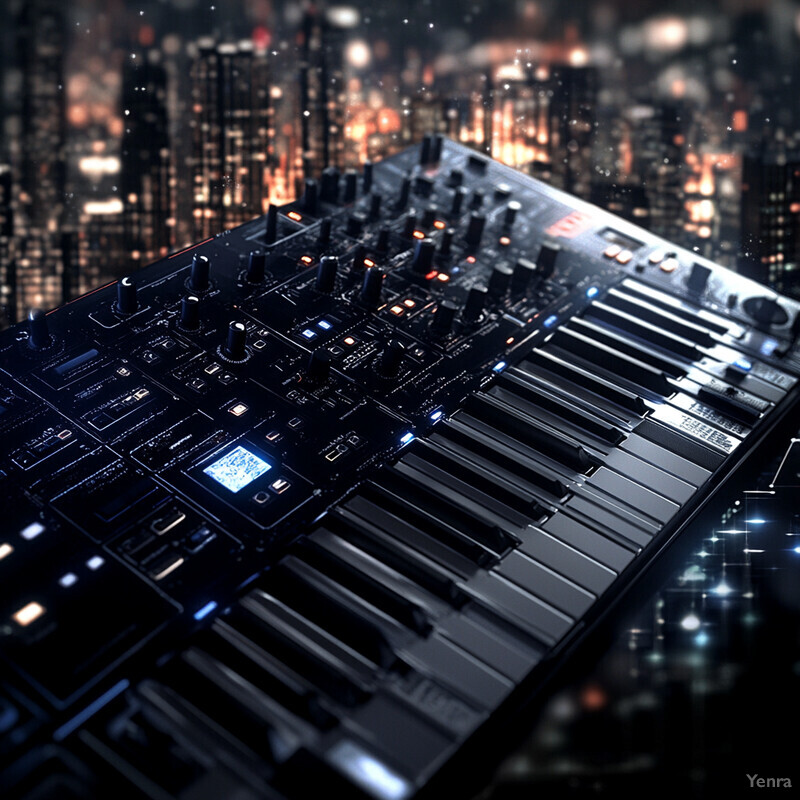
In practice, modern AI music systems often combine multiple techniques. They break the task into parts and use the best tool for each. For instance, Suno’s pipeline involves conditioning on text (and other inputs) and generating audio. How might that work? Typically, systems like this use a two-stage approach: first, convert the input text (which might include a genre description, mood, or even user-provided lyrics) into an intermediate musical representation, and second, render that representation as audio. The first stage could be handled by a transformer that outputs a sequence of audio tokens or a musical score. The second stage could be a decoder (like a diffusion model or a specialized vocoder) that turns those tokens into waveform audio. Some models use an autoencoder to compress audio into a sequence of tokens (sometimes called a “latent code”) – similar to how MP3 compression works, but learned by a neural network – and then models that token sequence with a transformer. This is how Google’s AudioLM/MusicLM works and likely how Suno’s engine operates under the hood. By training on vast amounts of music audio (possibly “800,000 audio files… representing 19,500 hours of sounds” as in Stable Audio’s case), these models learn a rich representation of both musical structure and sonic texture.
Conditioning plays a crucial role. A critical aspect of these systems is how they allow control over the output. In older algorithmic composition, you might set some parameters or choose a style programmatically. In AI models, conditioning is done by feeding additional information into the model along with the prompt. Suno and similar platforms condition on things like: a textual description of style/genre, specific lyrics or themes, and even non-text inputs like an image or video (in Suno’s case, the new “Suno Scenes” feature lets a user upload a photo or video to inspire a soundtrack). The model has been trained with these modalities – for example, it might use an image captioning model to extract keywords from an image, or it might directly learn to associate visual features with musical ones. Conditioning essentially guides the generative process so that the output aligns with the user’s request. If you ask for “a piano ballad in the style of 1970s soul”, the model will steer towards that mode, because it has learned embedded associations such as “piano ballad,” “1970s soul,” etc., from its training data. Notably, Suno doesn’t allow entering artist names directly (to avoid impersonation issues), but it provides a list of genre and style keywords that correspond to famous artists – for example, instead of prompting “in the style of Coldplay,” you might prompt “Alternative Rock, Atmospheric, male vocals” to get a similar vibe. Under the hood, those keywords act as conditioning tokens that influence the generation.
Furthermore, models like Suno often involve multiple components working together. As the Rolling Stone profile revealed, Suno’s system might “call on OpenAI’s ChatGPT to generate the lyrics” while its own model handles the musical composition and vocal performance. This modular approach means the AI can both write words and sing them out. By structuring the problem (lyrics generation separate from audio generation), each model can specialize, and the overall result is more coherent. The Suno model itself has to tackle a range of tasks: melody creation, arrangement (which instruments or sounds play when), and vocal synthesis. It was noted that one reason Suno’s vocals are relatively convincing is that the model was trained not only on singing but also on spoken audio, learning the nuances of human voice characteristics from speech data in addition to music. This kind of training strategy – augmenting music data with related audio data – is part of the technical ingenuity behind modern systems.
In summary, the technical magic of AI-generated music comes from combining: (1) powerful sequence models (transformers) to handle musical structure and long-term dependencies, (2) generative audio models (diffusion or hybrid token decoders) to produce realistic sounds, and (3) conditioning mechanisms to give users control over style, lyrics, and other aspects. It’s akin to having a super flexible virtual musician in your computer that has ingested the collective knowledge of countless songs and can improvise or compose under your direction.
To make this concrete, Suno and similar platforms treat music generation almost like a natural extension of language generation. They tokenize everything—notes, beats, timbres, lyrics—and let the AI predict the next “tokens” based on what it learned from real music. The result? You type a request, and the AI model continuously “writes” a song token by token, guided by your prompt, until a full piece emerges. And because it’s generating actual audio (not just sheet music), you can hear a performance – often complete with instrumentation and vocals – within seconds. This was practically science fiction a decade ago; now it’s becoming routine.
With the fundamentals covered, let’s explore how these techniques are being used creatively by musicians and designers at the forefront of the field.
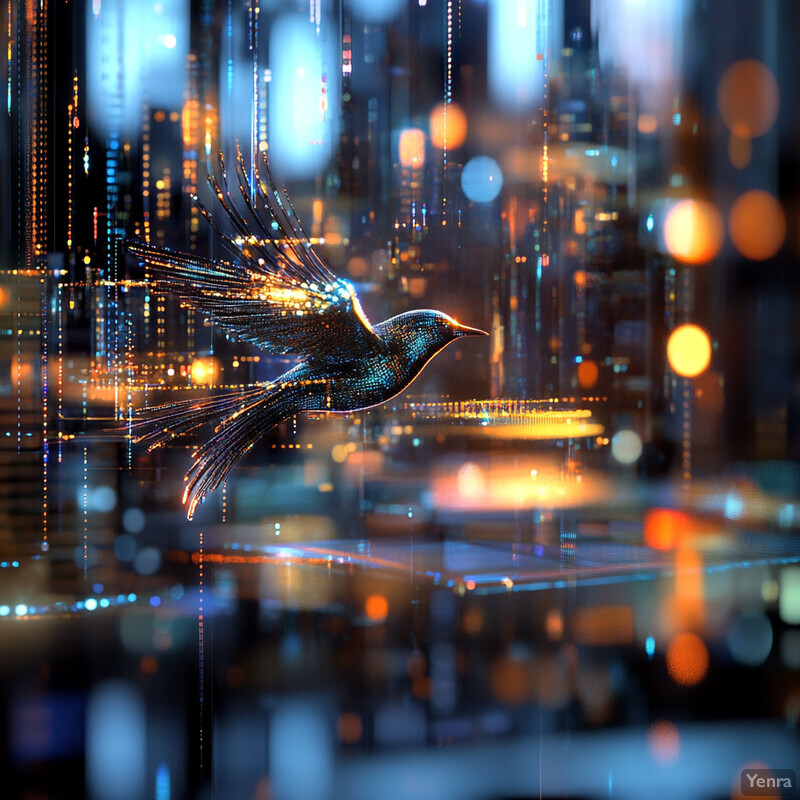
Creative Frontiers
The period from 2023 to 2025 has seen an explosion of musicians, composers, and producers experimenting with AI as part of their creative process. Generative music AI has rapidly moved from research labs into real-world studios and even onto the charts. In fact, one survey in 2023 suggested that up to 60% of musicians had already used some form of AI in music-making – whether for generating ideas, creating synthetic vocals, or aiding in production tasks. Here, we highlight some compelling examples and trends that illustrate these creative frontiers.
AI-Generated Songs and Albums: Several artists have released entire songs (or even albums) using AI tools. Back in 2017, singer-songwriter Taryn Southern released “I Am AI,” reportedly the first album entirely produced with AI assistance, using tools like Amper Music and AIVA to compose music. That was a precursor to what’s happening now on a larger scale. In 2023–24, everyday creators on platforms like Suno, Boomy, and Soundful started churning out thousands of AI-generated tracks. Some of these tracks even made it onto streaming services. For example, users of Boomy (another AI music app) collectively uploaded so many songs to Spotify that, at one point, Spotify had to weed out suspected bot-uploaded content to prevent abuse – a hint of the coming “robo-music flood”. But it’s not all anonymous uploads; notable artists are releasing AI collaborations too. The electronica artist BT composed an entire generative album called “Metaversal” with machine assistance, and ambient pioneer Brian Eno (long an advocate of generative systems) has spoken about using algorithms to create endless music pieces (though Eno distinguishes those simpler algorithms from AI).
Mainstream Musicians Embracing AI: In the past two years, we’ve seen mainstream figures openly work with AI. A striking example is superstar producer David Guetta, who in early 2023 used an AI model to generate a rap verse in the style of Eminem’s voice for one of his live sets. He had an AI write lyrics and another model clone Eminem’s vocal tone to deliver them. The crowd loved it, and while Guetta made clear he wouldn’t release it commercially (to avoid legal issues), he hailed AI as a new tool for inspiration. Similarly, Grimes – the experimental pop artist – launched an AI platform called Elf.tech that allows anyone to create songs using her voice. She encouraged fans to experiment and even offered “I’ll split 50% royalties on any successful AI-generated song that uses my voice”, treating the AI like a collaborator. This led to a flood of Grimes-voiced AI tracks online and demonstrated a new artist-approved model for AI-generated content (Grimes essentially provided a legal blanket for her voice’s use, as long as she shared in the upside).
One of the biggest music headlines of 2023 involved The Beatles – showing that even legendary artists are not untouched by AI. Using AI audio restoration, Paul McCartney and team extracted John Lennon’s voice from a lo-fi 1970s demo and, with new instrumentation by surviving members, completed the song “Now and Then.” This “AI-restored” Beatles track, released in late 2023, was an emotional moment for fans. It even won a Grammy for Best Rock Performance in 2025, decades after the band’s breakup. While the AI in this case was used to clean up and augment archival material rather than compose from scratch, it exemplifies how AI can weave into the creative process to achieve things previously impossible – like resurrecting the voice of a departed member to “collaborate” on a new song. On the flip side, that same technology raised debates (some felt it crossed an ethical line to create new Beatles material artificially), but McCartney framed it as using the latest tech to fulfill a very human creative wish.

Film, Game, and Media Applications: AI-generated music is making inroads into film and game soundtracks, especially in contexts where a lot of content or adaptive music is needed. In the video game realm, developers are exploring AI to generate interactive music that changes based on gameplay. Imagine a horror game where the music’s intensity is composed on the fly by an AI reacting to the player’s situation; prototypes of adaptive audio systems have already been showcased in experimental projects, demonstrating how dynamic soundtracks can enhance immersion.
For more conventional uses, AI composition tools are being used to quickly generate stock music for YouTube videos, podcasts, and advertising – essentially replacing the need for large libraries of pre-made stock tracks. For instance, services like Mubert and AIVA generate royalty-free music tailored to content creators’ needs (background EDM for a vlog, or lo-fi beats for a stream, etc.). In film scoring, fully AI-composed scores are still rare for major productions (human composers aren’t out of a job yet), but AI is starting to assist in the scoring process. A composer might use an AI tool to generate quick thematic ideas or to musically sketch a scene, then refine or orchestrate those ideas manually. There have also been experimental short films and indie projects that used AI for the entire score, to mixed results. The creative frontier here is not necessarily about replacing film composers, but providing a shortcut for temp tracks and inspiration – saving time during the creative iteration.
Collaboration and Co-Creation: Many artists are discovering that AI can be a fascinating creative partner. It’s not just about hitting a button to churn out a finished song, but rather dialoguing with the AI. One example comes from producer Shawn Everett (who has worked with The Killers and others). He experimented with OpenAI’s Jukebox by feeding it a chord progression written by The Killers’ frontman and asking the AI to extend it “in the style of Pink Floyd.” The AI-generated continuation provided a surprising take, which the human team could then build upon. This kind of stylistic merging – a band’s original idea developed further by AI imitating another band’s vibe – hints at creative possibilities that would be hard to arrive at otherwise. Legendary producer Timbaland has also jumped into AI music wholeheartedly. In late 2024, Timbaland announced a partnership with Suno and declared “It’s the new age of music creation and producing,” mentioning he spends hours a day working with the Suno platform to rework beats. Seeing a figure of Timbaland’s stature devote that much time to an AI tool is a strong sign that many in the industry view these models not as gimmicks, but as serious creative aids.
We’re also witnessing new genres and styles born from AI collaboration. Some musicians deliberately incorporate the “AI-ness” of the sound as aesthetic. For example, artist Holly Herndon released a track sung by her AI “clone” (Holly+), and the slight uncanny quality of the vocals was part of the artistic statement. There are AI music contests now, where the goal is to make the best track using AI tools, further driving innovation. The online community around Suno shares their AI-generated songs, ranging from hyper-pop tunes to cinematic scores, often remarking on how quickly they can manifest an idea that would have taken weeks to produce manually.
Case Studies of Real-World Use: Let’s look at a couple of concrete recent cases that show AI music in action:
Case 1: Ghostwriter’s “Heart on My Sleeve” (2023). An anonymous producer known as Ghostwriter created an AI-generated rap song that mimicked the voices of Drake and The Weeknd without their involvement. The song, “Heart on My Sleeve,” went viral – many listeners found it catchy and shockingly convincing. It sparked outrage from the artists’ label (UMG), which swiftly issued takedowns and called it a violation of copyright. While the vocals were cloned, the musical composition itself was apparently original (likely the human producer wrote the beat and lyrics, using AI only for voice). This borders the domain of generative music because the producer treated the AI voice as an instrument. The song’s success and controversy highlighted both the creative potential and legal challenges of AI in music. It raised the question: if fans actually love an AI pastiche of their favorite artists, what does that mean for the future of music production and fandom?
Case 2: Suno User-Generated Songs (2024). On the Suno platform, everyday users have been crafting surprisingly high-quality songs. One user prompt example (shared on a forum) was: “A 90s hip-hop song with a male singer with a deep voice, singing about how AI models are creating new songs after being trained on all the data of artists”. In response, Suno generated a full track with lyrics and music, including verses like “AI models spittin’ rhymes… trained on data from all the greats” and a chorus about “AI takin’ over… the rise of the AI flow”. The result sounded like a solid rap song, …complete with multiple verses and a catchy chorus. Such community-shared examples show that everyday users can direct AI to produce genre-appropriate music on the fly. Reactions ranged from astonishment (e.g. “How is this real?!”) to philosophical commentary on how derivative or “formulaic” the AI’s output might be. But importantly, people are using these tools in creative ways: writing songs about AI with AI, mashing up styles, and prototyping musical ideas faster than ever. The creative frontier here is one of co-creation and democratization – the barrier to entry for music-making is lowering, inviting a surge of fresh ideas from non-traditional creators. A musician with writer’s block can have the AI suggest a chord progression or a lyric hook; a non-musician with a melody in their head can describe it and have the AI generate a listenable track to capture the vibe.
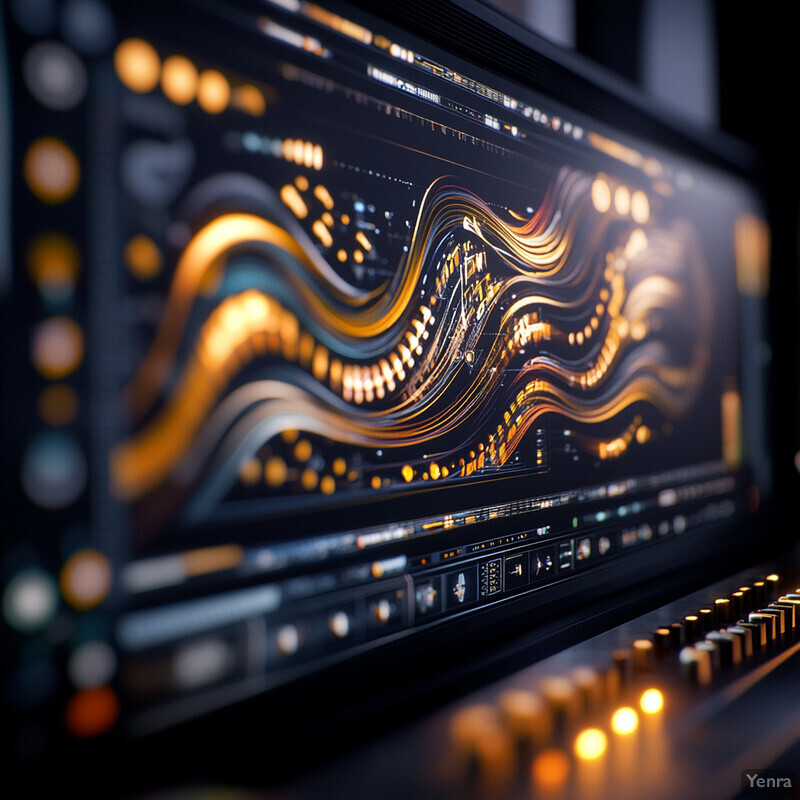
If you’re curious to experiment yourself, Suno is a great platform to start. Here are a few prompt ideas you can try on Suno to explore its generative prowess (remember to pair a topic or mood with a style/genre descriptor, and optionally specify a vocal type):
- “An upbeat song about exploring galaxies, with female vocals in an 80s style.” – (This might yield a retro-electronic track with airy female vocals singing space-themed lyrics.)
- “A cinematic orchestral piece, epic and uplifting, no vocals – soundtrack for a hero’s journey.” – (Great for testing Suno’s ability to do instrumental film score vibes.)
- “Classic Rock, bluesy guitar riff-driven track about overcoming hard times, male vocals.” – (Should produce something in the vein of a 70s rock anthem with emotional male vocals.)
- “A tranquil ambient soundscape of a rainforest at dawn, no vocals, with gentle percussion.” – (This prompt encourages an atmospheric, texture-rich piece – good for seeing how it handles non-pop, mood-focused content.)
- “Hip hop beat with jazzy elements, male rap vocals celebrating technology and art coming together.” – (This could result in a modern rap track with a positive theme and some jazz influence in the instrumentation.)
Feel free to get creative – Suno allows custom lyrics too, so you can supply your own verses or let the AI write them. Users have, for example, generated everything from K-pop style songs to opera arias using clever prompt combinations. The key is that AI is opening up musical creativity to anyone willing to experiment, providing “an infinite source of inspiration through algorithmic composition”. Musicians can now jam with models and explore ideas they “might never have considered before”, and listeners are starting to hear the results in albums, games, and online media.
Sound Design Innovations
When we talk about AI in music, it’s not just about writing melodies and harmonies; it’s also transforming the very sounds and textures we can create. Sound design – crafting the timbre of an instrument, the ambience of a space, or the layering of sonic effects – is a huge part of music and audio production. AI is pushing boundaries here by generating and manipulating sounds in ways that go beyond traditional synthesis or sampling. Let’s explore how AI is innovating in timbre, texture, and overall sound design, and also clarify the difference between symbolic generation (dealing with notes/scores) and audio-based generation.
Timbre Creation and Transfer: Generative models can invent new instrument sounds or transform existing ones. For instance, Google’s research demo NSynth used a neural network to learn the timbral features of instruments and could interpolate between them – creating hybrid sounds (imagine a tone that is half guitar, half flute). More recent approaches use models like VAEs (Variational Autoencoders) or GANs to navigate a “timbre space.” You can dial between “bright trumpet” and “breathy voice” and get something in between. AI can also do timbre style transfer: take an audio clip of one instrument or sound, and re-render it as another. A diffusion model, for example, can be fed a recording of a violin playing a melody and transform it so it sounds like a cello playing the same melody. Researchers demonstrated this by using diffusion or GAN models trained on pairs of instruments – the model learns characteristics that differentiate a violin from a cello, and can apply those differences to swap the sound while keeping the musical content constant. Similarly, AI voice models can change the timbre of a voice – this is how you get, say, a Frank Sinatra-style vocal singing a modern rap song (an example of voice style transfer that went viral on YouTube). These techniques are incredibly useful for sound designers: rather than painstakingly EQing or processing a sound to try to mimic another, you can have an AI morph it at a fundamental level.
Texture and Ambience Generation: Need the sound of a dystopian city street, or an alien rainforest? AI can help generate ambient soundscapes and effects. Models like AudioLDM (an audio diffusion model) have been used to generate things like nature sounds or mechanical noise based on text prompts. Because diffusion models work at the audio signal level, they can create rich, evolving textures – like wind chimes in the breeze, or a cacophony of subway noises – that aren’t just looping samples but genuinely novel variations. This is game-changing for videogame and film sound designers who might want endless, non-repeating ambient background audio. In fact, apps like Endel already use AI to generate never-ending ambient music and noise tailored to relaxation or focus. Endel’s AI produces evolving, subtle soundscapes that respond to input (time of day, user heart rate, etc.), effectively treating ambience as a personalized, generative experience rather than a static recording.
Effects and Audio Processing: AI is also stepping into the role of audio engineer, not just composer. There’s a concept of “neural audio effects” where a model learns to apply effects like reverb, distortion, or EQ in a learned manner. For example, a model might learn what a large cathedral impulse sounds like and can apply that reverberation to any dry recording, even tweaking the reverb in creative ways that go beyond physical reality. Another example is using diffusion models for in-painting and upsampling in sound. If you have a recording with a gap or unwanted noise, an AI can fill in the missing audio smoothly (audio in-painting), or if you have a low-quality audio, a model can generate a higher-fidelity version (upsampling) by hallucinating the lost details. These capabilities blur the line between sound design and restoration; an AI might simultaneously clean up audio and add creative effects as needed.
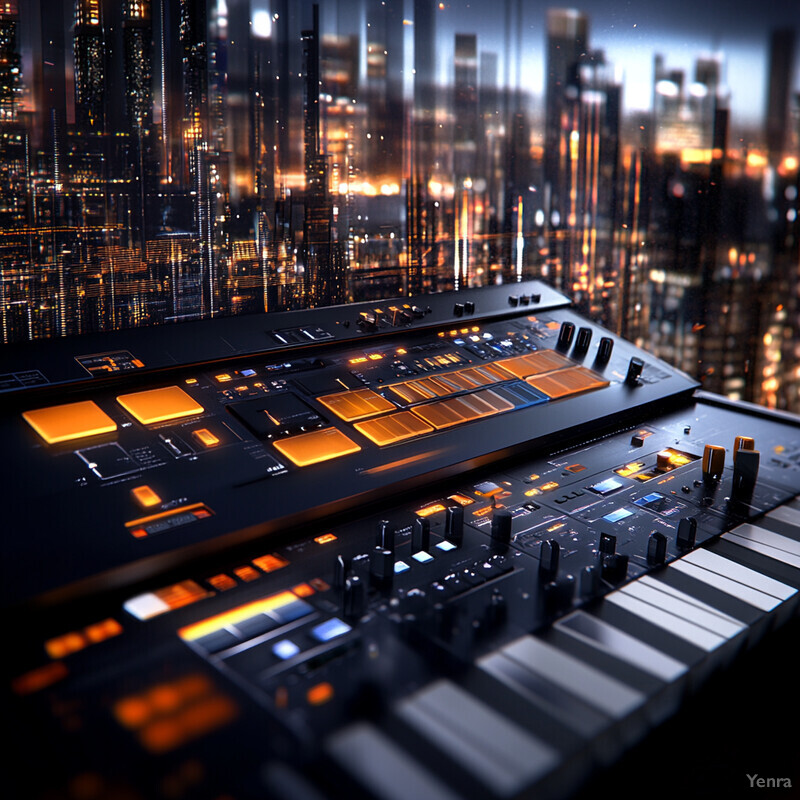
What’s particularly exciting is how AI can handle micro-level sound design decisions that humans typically labor over. For instance, say a producer has a drum sample but wishes it had a bit more “body” or a different texture. A diffusion model can be prompted to “slightly change this sample to have more body or crunch,” and it will produce a new variant that maintains most of the original character while altering its spectral content. This is more powerful than a simple filter or EQ tweak – the AI is effectively re-synthesizing the sound with the desired quality, which can yield a more natural result. Sound designers are beginning to use such tools to generate entire libraries of unique sound effects (for movies or games) that never existed before, from sci-fi noises to realistic Foley sounds, in a fraction of the time it would take to record or program them manually.
Symbolic vs Audio-Based Generation: It’s important to clarify the distinction here. Symbolic generation refers to creating music at the level of abstract representation – notes, chords, MIDI data, sheet music. A symbolic AI might output that a C major chord should be followed by an A minor chord, or that a snare drum hits on beats 2 and 4. Many early algorithmic composition systems and some current ones (like those generating MIDI files for piano) are symbolic. The strength of symbolic generation is that it easily captures musical structure and theory (since it deals in notes and rhythms directly). But its limitation is obvious: someone (or something) must turn that symbolic output into actual sound. That’s typically done by humans performing it, or by feeding the MIDI into synthesizers or sample libraries. On the other hand, audio-based generation means the AI directly produces the sound wave – the literal final audio that you can press play on and listen to. Modern systems like Suno, MusicLM, and others perform audio-based generation. They do the “rendering” internally, so the output is not a score to be interpreted; it’s the finished song. This is why Suno can deliver a “radio-ready” result with vocals and backing track – it’s not handing you a melody to play on your guitar, it’s handing you the recorded performance.
Each approach has pros and cons. Symbolic generators (like some used in earlier AI tools or assistive composition plugins) offer finer control over musical content (you could easily edit a wrong note, change the key, etc.), and often the output is cleaner in a compositional sense. Audio generators capture timbral realism and nuance (the rasp of a voice, the decay of a cymbal), but they can sometimes wander in structure or produce hard-to-edit results (because modifying an audio waveform is much harder than editing a MIDI note). We’re now seeing hybrid approaches as well: for example, a system might first generate a symbolic outline (like chords and a melody), then use another model to flesh it out into audio – combining the best of both worlds.
From a sound designer’s perspective, audio-based generation is incredibly powerful. It means the AI can generate new sounds that aren’t limited to existing instrument samples or synthesis techniques. If you want a drum that sounds like a blend of a tabla and a water droplet, an AI could conceivably create that unique waveform. In traditional sound design, one might layer multiple sounds and apply effects to approximate such a thing. With AI, you just specify it (via a prompt or example) and the model does the heavy lifting of synthesizing the exact waveform—blending diverse sonic textures into a cohesive, entirely new sound.
Moreover, AI can handle complex audio transformations holistically, enabling the multi-language synthesis of vocals. For instance, in a K-pop project by HYBE, they used AI voice models to have their singer record a song once, then generate her singing in five other languages while maintaining matching expression and musicality. This is a kind of timbre+phonetic style transfer that sound engineers alone could not achieve convincingly. It shows how AI opens new possibilities: one singer, infinite “localized” versions; one instrument lick, played on any instrument you choose after the fact.
In essence, AI is expanding the palette of sounds available. It’s allowing creators to work at the level of intention (“make this sound more retro”, “give me an instrument that combines a piano and a harp”) rather than twiddling dozens of knobs to coax a synthesizer toward that outcome. This greatly accelerates sound design workflows and encourages experimentation. We’re already seeing artists release tracks with AI-fabricated sounds that have no real-world counterpart. And on the horizon, we might even discover entirely new sonic textures and musical timbres invented by AI – sounds that surprise and inspire humans to build new music around them.
Ethical Considerations
The rise of AI-generated music has provoked intense debate around ethics, ownership, and the future role of human creators. As algorithms increasingly contribute to songwriting and production, questions emerge: Who is the “author” of an AI-composed piece? Can it be copyrighted, and by whom? Is it fair to train AI on artists’ work without permission, and if not, how should those artists be compensated if their styles are imitated? This section delves into these issues, examining how the music industry and creator community are grappling with them.
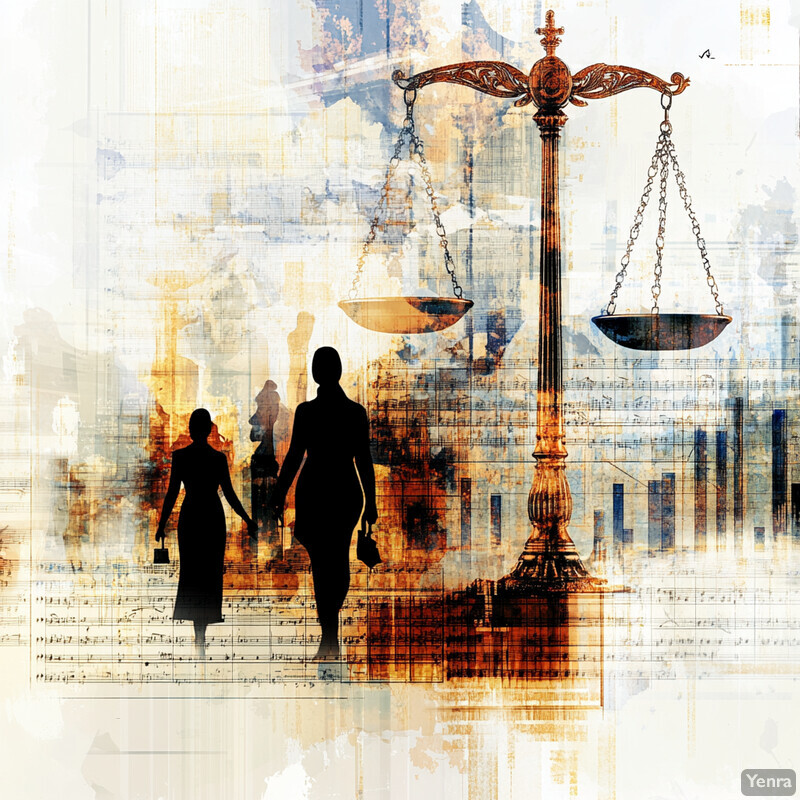
Authorship and Copyright: Traditionally, music copyright has required a human author – you can’t copyright a song written by a monkey or a random number generator. Initially, this principle was applied to AI works as well. In the U.S., the Copyright Office repeatedly denied registration to purely AI-generated art. However, policy is beginning to adapt. In a notable January 2025 decision, the US Copyright Office recognized that “AI generated work can be copyrighted when it embodies meaningful human authorship”. In other words, if a human guides the AI and makes creative choices (for example, curating the outputs, editing, or providing the critical prompts), the resulting music can be treated as a co-authored work and given copyright protection with the human as the author. This is a big shift from a blanket “no AI works” stance – it acknowledges that AI is often a tool wielded by a human artist, rather than an autonomous composer acting alone. Many anticipate a future where songwriting credits might list both the human and perhaps even the algorithm or model used (e.g. “Song by Jane Doe and Suno AI”), much like one would credit a co-producer or a sample source. There are still grey areas: if a track is 95% AI generated and the human just wrote a one-sentence prompt, is that “meaningful” authorship? Different jurisdictions are handling this differently, but the trend is towards allowing human–AI collaborations to be legally protected, to encourage creativity rather than stifle it.
Training Data and Fair Use: One of the most heated issues is that AI models are trained on vast collections of existing music. The major music labels have taken issue with this, arguing that using copyrighted songs to teach an AI (without permission or payment) is essentially an illegal appropriation. In 2023–24, we saw mounting tensions: in April 2024, over 200 artists (including big names like Billie Eilish, Paul McCartney, Nicki Minaj, and Pearl Jam) signed an open letter calling unpermissioned AI training an “assault on our creative rights”. They accused tech companies of using their work to build models aimed at “replacing the work of human artists” and “diluting the royalty pools” by flooding the market with AI-generated content. The letter urged for responsible AI practices and not deploying AI that undermines human artistry. This echoes a broader fear in the industry: if anyone can generate “songs in the style of X” on demand, what does that do to X’s livelihood and the value of their original creations?
On the other side, AI developers have started to push back legally. In August 2024, startup Suno (by then facing a lawsuit from major record labels) responded by asserting that training on copyrighted music constitutes fair use under U.S. law. Their argument is that the AI does not store or reproduce the training songs verbatim, but learns from them to create something new – a transformative process akin to how a human musician might learn by listening to others. This issue is now working its way through courts and is far from settled. The outcome will set important precedents: if courts rule that AI training is fair use, AI companies can breathe easier and continue using large datasets (perhaps with some industry licensing deals to placate rights holders, like how Stability AI partnered with a stock music company for licensed data). If courts rule it’s infringement, AI companies might have to severely limit their training material or pay for extensive licensing, which could slow the advancement of open AI music models.
Imitation vs. Inspiration: Ethically, there’s a line between being inspired by someone’s style and replicating it too closely. With AI, that line can blur. For instance, AI can now clone an artist’s voice or generate instrumentals uncannily close to a specific band’s signature sound. Many artists understandably feel uncomfortable with this – it can feel like their identity is being used without consent. A prominent case was the AI-generated “Drake” and “The Weeknd” duet by Ghostwriter that we discussed. The fact that it “mimicked the voices of beloved stars” and even fooled some listeners triggered both admiration and alarm. From a legal standpoint, the Recording Academy (Grammys) quickly made it clear that such a song would not be eligible for awards, emphasizing they will only recognize music made by human creators. Likewise, streaming platforms, at the behest of labels, have been removing deepfake songs using artists’ likenesses. There’s an analogy here to deepfakes in visual media – society is grappling with how to handle impersonations and protect individuals’ identities.
Some artists, however, have taken a more permissive or even welcoming stance. We saw how Grimes invited people to use her AI voice, essentially giving permission and working out a royalty-sharing scheme. Another example: the estate of Frank Sinatra (as noted in that open letter) is involved in discussions, likely to ensure respectful and licensed use of Sinatra’s voice if AI were to recreate it. The ethical approach here is one of consent and compensation – if an artist says “go ahead and use my style or voice, and we’ll split the profits,” then the ethical and legal issues are largely resolved for that case. The challenge is scaling that to the entire industry, where thousands of artists might not have explicitly given permission but their work exists in the training data of models. The industry might move toward collective licensing solutions (similar to how radio or venues pay blanket license fees to play songs) so that artists are compensated when AI models use their work as learning material, even if indirectly. This is an ongoing conversation between tech companies, music publishers, and organizations like ASCAP/BMI.
Impact on Human Musicians: Beyond legalities, there’s a cultural and economic concern: will AI-generated music flood the market and reduce opportunities (and income) for human musicians and composers? Already, we hear of content producers considering AI for cheap background music instead of hiring musicians. Stock music composers worry that clients will just generate what they need via AI, cutting into a traditional revenue stream. And independent artists fear a scenario where the internet is swamped with AI songs, making it even harder to get noticed (there’s already more music being released than any person could ever sift through – AI could multiply that exponentially). One Reddit comment wryly envisioned “users of models like Suno flooding streaming services with robo-creations by the millions” and speculated that Spotify might eventually have to put up gates (e.g. requiring proof of human creation or a special tag for AI music). This hasn’t happened yet at scale, but it’s a scenario on people’s minds.
On the flip side, some argue that music has always valued formula and familiarity, and AI is just a new tool to deliver that. As one observer noted, many listeners describe their taste in terms of genres – which follow set conventions – and “the fact that I know how every alt-[pop] song will be structured… doesn’t make it less enjoyable”. By this view, if AI produces music that people like, it isn’t inherently bad – it might push human musicians to focus on what truly makes them unique (emotion, storytelling, live performance, personal connection). There’s also the perspective that human creativity won’t be supplanted so easily. Music is not only about the end product; it’s about the artist’s journey, the context, the authenticity. Fans form emotional bonds with human artists – their lyrics, their persona – something an algorithm arguably can’t replicate. As experimental musician Lex Dromgoole mused, if we enter an era of “infinite music at infinite speed,” it might ironically make us “return to thinking about what we as humans bring to the table”. In other words, it could raise the bar for what is considered meaningful music, reinforcing the value of human touch and imagination.
Response and Adaptation: The creative community is actively responding to these challenges. We’ve already mentioned open letters and advocacy by artists. There are also efforts to embrace and shape the technology: for example, startups are emerging that represent artists’ rights in the AI space, offering to license an artist’s style or voice to companies under controlled conditions (so at least it’s done with permission and payment). Some labels and tech firms are exploring partnerships – in 2023 there were reports of Universal Music Group in talks with Google to develop an AI tool that legitimately licenses artist voices for fan-generated songs, aiming to turn the phenomenon into something monetized and mutually agreed upon. This could lead to official “AI featuring [Artist]” releases, where fans or producers create tracks with an artist’s AI voice under a revenue-share model (essentially formalizing what Grimes did informally).
Another adaptation is that artists might use AI on themselves – effectively beating the imitators to the punch. We can imagine famous artists releasing AI-generated remixes of their own work, or “lost songs” in their style that they curated, thus occupying that space so third-party clones are less appealing. In Japan, for instance, the concept of Vocaloids (like Hatsune Miku) has long accustomed listeners to virtual singers – some human musicians there have already started creating “AI duets” where they sing alongside their AI-trained voice model. This blurs who owns the creativity, but if the artist is involved, they retain control and credit.
Finally, there are important ethical discussions about artist attribution. If an AI is trained on hundreds of artists, and it produces a song, should it somehow credit those influences? This isn’t done for human artists (who might subconsciously be influenced by many others), but with AI we know exactly which data went in. Some propose that metadata or documentation should list prominent influences or training data sources, especially if an AI output is very close to a specific style. This remains impractical with current tech (and not legally required), but it’s part of the ethical debate: giving due recognition to the human creators whose works enabled the AI.
In summary, the ethical landscape of AI-generated music is still taking shape. There’s a tug-of-war between innovation and protection: innovation promises democratization and new art forms; protection seeks to ensure human creators aren’t robbed of agency or revenue. The industry is responding with a mix of resistance (lawsuits, letters), adaptation (using AI as a tool, creating new business models around it), and calls for updated regulations. As we navigate these issues, one guiding principle is emerging: human intention and oversight should remain central. When AI is used as a tool by humans (rather than as an autonomous content factory), it tends to be seen as more ethically palatable and even exciting. The goal many are coalescing around is finding ways to integrate AI into music such that it augments rather than replaces human creativity, and does so in a way that respects artists’ rights and contributions. With thoughtful policy and open dialogue between tech and artist communities, there’s hope that we can strike a balance where AI becomes a well-regulated “instrument” in the musician’s toolkit.
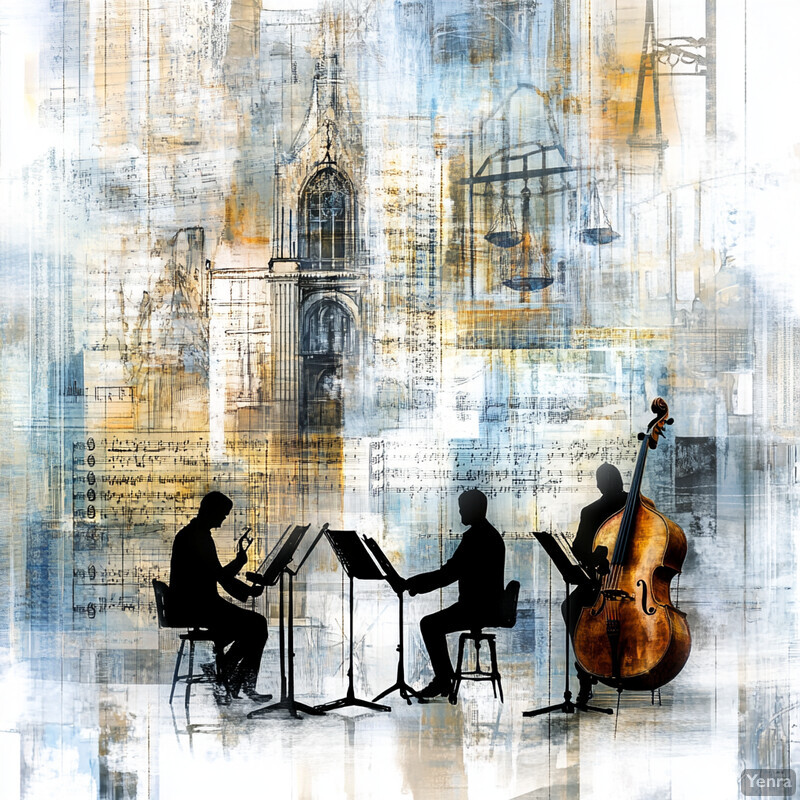
Future Horizons
Looking ahead, the world of AI-generated music is poised to evolve in extraordinary ways. We are essentially at the dawn of a new era, and many “exciting developments are on the horizon”. What might the coming years and decades hold for the intersection of algorithms and music? Here are some educated speculations and emerging trends:
Even More Advanced Models: The AI models of the future will likely be far more sophisticated in understanding music. We can expect models that grasp not just surface style, but the emotional and narrative arc of music. Future AI might handle long-form compositions (imagine an AI composing a 40-minute symphony or a concept album with recurring motifs) with coherence that rivals human composers. They’ll also better capture subtle qualities like “musical emotion” – generating pieces that can make a listener genuinely feel uplifted, melancholy, tense, etc., with fine control. As one forward-looking piece noted, we may see “AI models capable of understanding and replicating complex musical emotions and structures”. Additionally, the voices generated by AI will become more realistic and expressive – already models are improving at enunciation and reducing artifacts; in a few years, an AI singer could potentially deliver a performance indistinguishable from a trained human singer, complete with breathiness, grit, and dynamic nuance.
Integrated Tools in Workflows: The line between AI and traditional music software will blur. We’ll likely see AI composition features integrated directly into DAWs (Digital Audio Workstations) like Ableton, Logic, or Pro Tools. For example, you might highlight eight bars and click “elaborate this section,” and an AI will suggest variations or harmony layers. Or in a notation program, you might ask the AI to “continue this melody in baroque style” and get instant score. As AI becomes a standard part of the toolkit, using it will feel less like consulting a separate oracle and more like collaborating with a smart bandmate within your normal production environment. Major tech companies (e.g. Apple, Steinberg) are surely researching this. The “increased integration of AI tools in mainstream music production software” is a near certainty.
New Musical Genres and AI-Influenced Aesthetics: With AI capable of blending styles effortlessly, we might witness the birth of new genres that are uniquely suited to AI collaboration. Perhaps there will be an “AI pop” genre where the human artist intentionally leaves parts of the music creation to AI and that aesthetic – slightly surreal lyrics, perfect-but-strange harmonies – becomes its own style that listeners appreciate. Or micro-genres where AI is used to intensify certain features (imagine “hyperpolyphonic jazz” that’s so complex only an AI could have generated those note clusters, yet it defines a new sound that some find appealing). We’ve already seen something like this in visual art with AI-generated art exhibitions. In music, as algorithms create novel combinations, humans will latch onto some of those as the “next cool sound.” The future could see charts topped by songs that are co-created with AI, proudly labeled as such, ushering in a mainstream acceptance of AI’s role akin to how synthesizers or electronic production are now fully accepted as part of music creation.
Personalized and Interactive Music: One exciting frontier is music that adapts to each listener. AI could generate personalized soundtracks in real time – for instance, background music in a video game or VR experience that is unique to your playthrough, matching your actions and mood. This goes beyond today’s dynamic music (which typically pieces together pre-composed segments) to on-the-fly composition. It’s not far-fetched to imagine a service where you input some preferences or even biometric data (heart rate, etc.) and an AI composes a piece just for that moment and that person. Already, as mentioned, apps like Endel do this for relaxation and focus music. In the future, perhaps streaming platforms will offer AI-curated songs that aren’t just selected for you, but composed for you on the spot, based on your listening history and current context. This raises philosophical questions about the communal aspect of music (two people might never again hear the exact same “song”), but it’s a possible direction.
Education and Creativity for All: AI could become a tutor or creative assistant for learning music. Imagine an AI that can sit with a student composer and provide immediate feedback: “The harmony you wrote is a bit tense; would you like to hear a calmer alternative?” or “Try modulating to G minor here for a dramatic effect.” It could also help in teaching instruments – generating custom exercises and accompaniment that adapt to the student’s progress. Moreover, AI will democratize composition in education. Students who don’t yet have advanced theory or instrumental skills could still bring their imaginative musical ideas to life by describing them to an AI, thus encouraging creative experimentation early on. This might produce a generation of composers who think less in terms of mastering an instrument and more in terms of mastering description and curation, which is an interesting shift.
Human-AI Co-Creation Workflows: We’re likely to see formalized co-writing sessions between humans and AI. For example, a songwriter might “jam” with an AI: she plays a melody, the AI responds with a continuation or a countermelody, she then builds on that, and so forth – a back-and-forth interplay. Some experimental tools are already exploring this (like Google’s Piano Genie or Bach Doodle which respond to input creatively). In the future, it could be more seamless, perhaps via voice command or even brain-computer interfaces where you think of a musical idea and the AI develops it (a bit speculative, but research on music and brain signals does exist). The vision is a “collaborative process where artists work in harmony with intelligent algorithms”, as one writer put it. This echoes the concept of “AI as a creative partner” – not replacing the artist, but extending their capabilities. Musicians often seek inspiration from other musicians; in the future, one of those “musicians” in the room might be an AI agent with its own creative personality (tuned to your preferences).
Quality and Originality: As AI music becomes pervasive, there might be a counter-movement valuing human uniqueness even more (just as the rise of photography made hand-painted art more precious in certain circles). Live performances and the human storytelling behind music will remain crucial. Perhaps we’ll see AI music handling the utilitarian needs (like infinite background playlists, generic corporate music, etc.), while human artists focus on deeply personal expression that resonates because of its human imperfections and backstory. In essence, humans might double down on the “soul” of music, while AI covers a lot of the “surface.” Yet, it’s also possible AI itself will be used to attempt to inject “soul” – e.g. training models on expressive live performances to capture those nuances.
Industry Transformation: The music industry might fundamentally shift in its economics. If generative music can supply effectively limitless content, the monetization might move even more toward experiences (concerts, custom commissions, etc.) rather than recordings. Some have suggested a future where listeners become creators, using platforms like Suno to make songs for personal enjoyment or small circles, reducing passive consumption. Also, we might see AI A&R – labels using AI to analyze what makes hits hits, or even to generate potential hit songs which they then have human artists record (flipping the usual process). In fact, there are already startups claiming to use AI to detect hit potential or suggest tweaks to songs for popularity.
One can also imagine hyper-personalized song commissions: For instance, you could one day order an AI-composed song as a gift – “compose a jazz ballad about Alice and Bob’s wedding, in the style of Frank Sinatra” – and get a custom song that, while not sung by Frank, sounds like a crooner tune tailored to the couple’s story. This kind of personalized creative service could become popular, extending the idea of songs written on-demand (which human songwriters do on a small scale, but AI could do en masse).
In summary, the future horizon is a mix of boundless opportunity and important choices. Technologically, almost everything about how we create and interact with music could be reimagined with AI’s help. The question will be: How do we incorporate these capabilities in a way that enriches our musical culture? Ideally, the future is a place where human creativity and algorithmic creativity complement each other, leading to musical experiences that are more accessible, diverse, and innovative than ever. Perhaps we’ll see a flourishing of new music as more people find their voice (with a little algorithmic help), and at the same time, a renewed appreciation for the irreplaceable aspects of human artistry. As one article concluded, “we're not just creating new technologies – we're writing the next chapter in the evolution of music itself”. That next chapter, if guided well, could be an era of harmonized creativity, where the synergy of human and AI yields something truly beautiful and unexpected.
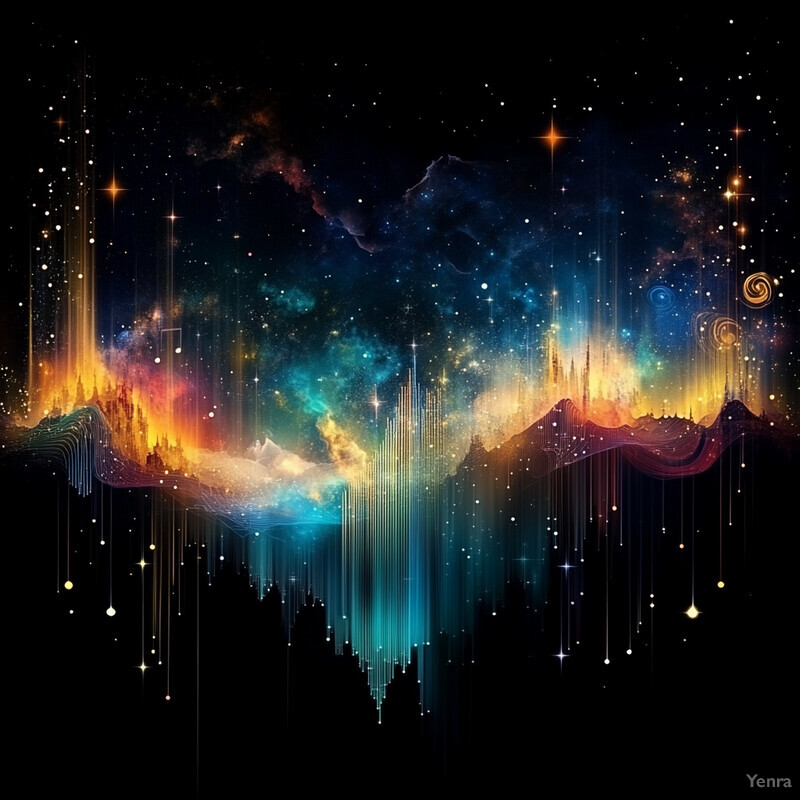
Conclusion
The story of AI in music is still being written, but one thing is clear: we are witnessing the emergence of a powerful duet between human intention and algorithmic imagination. In this article, we journeyed from the algorithmic experiments of the past to the cutting-edge systems of today like Suno, seeing how each development opened new possibilities for musical creation. We’ve seen that algorithms can now “transcend their silicon circuitry and hum a tune” – generating songs that move us or at least intrigue us, and doing so at our beck and call. Yet, throughout this exploration, a recurring theme has been the importance of the human element.
Music, at its core, has always been a deeply human endeavor – a means of expression, communication, and emotional connection. Introducing AI into the mix doesn’t change that essence; rather, it expands the toolkit available to composers and producers. It’s much like when synthesizers were invented: some feared they would make orchestras obsolete, but in reality they became new instruments that found their own place (and often worked alongside traditional instruments). Similarly, generative algorithms can be seen as new instruments or collaborators. In the hands of a creative artist, an AI can ignite inspiration and handle the heavy lifting of execution, allowing the artist to focus on guiding the overall vision. One composer might use AI to generate hundreds of ideas and then cherry-pick the most inspiring ones to develop into a piece – an accelerated brainstorming partner. Another might use AI to achieve a sound they hear in their head but can’t play themselves. In these scenarios, the human is very much steering the ship, with the AI as a capable first mate.
Of course, as we discussed, there are challenges to navigate – ethical, legal, and artistic. But the trajectory suggests these will be addressed, just as past disruptions were. The music industry and community are resilient; they adapted to player pianos, to radio, to sampling, to digital streaming, and they will adapt to AI. We are likely to establish norms and practices (like transparent labeling of AI content, fair compensation mechanisms, etc.) that allow humans and AIs to create in harmony rather than conflict. There’s a balance to be struck between protecting artists and embracing innovation, and the coming years will be crucial in striking it.
What’s truly exciting is the potential for new forms of creativity. We might find that AI pushes musicians into more conceptual and performance-oriented realms – because if AI can handle the “easy music,” humans will challenge themselves with more daring, personal, or avant-garde projects. Conversely, some musicians will dive fully into AI and become adept “AI composers,” much like DJs mastered turntables and samplers to create something novel. The landscape of musical roles could diversify: perhaps one person specializes in crafting prompts and curating AI outputs (an “AI music designer”), while another brings those outputs to life on stage, and yet another writes the narrative or lyrics that tie it all together. Collaborative creativity might reach new heights when human teams and AI systems work together.
In a poetic sense, we can view the AI as a manifestation of all the music that has come before – trained on the great works of countless artists – now offering its knowledge back to us in the form of suggestions and new compositions. It’s as if the collective musical muse has been distilled into a machine, ready to whisper tunes in our ear. But it falls to us, the human creators and listeners, to decide which whispers to turn into songs, which songs to sing, and what they mean to us. Our human intention – our feelings, stories, and creative decisions – will imbue those AI-generated notes with meaning and purpose.
So, “Composing with Algorithms” is not about ceding creativity to machines; it’s about expanding the creative dialogue. We set the goals, the AI offers possibilities, and through a back-and-forth process, something emerges that neither could have made alone. In the best outcomes, it truly is a harmonious partnership: the warmth of human creativity blended with the wild imagination of an AI that knows no fear or fatigue. The melodies of the future may be born from this synergy – part human, part machine, and entirely new.
As we stand at this exciting frontier, one can’t help but feel a sense of optimism. Yes, there are valid concerns to address, but the potential for artistic enrichment is immense. We often say music is a universal language; with AI, we are augmenting our vocabulary and dialects in that language. The future might bring us music we’ve never imagined – and yet, when we hear it, it could touch our hearts just as deeply as any melody composed by Mozart or McCartney. In that moment, it won’t matter whether a human or an algorithm wrote the notes; what will matter is that the music speaks to us.
To conclude, the world of AI-generated music and sound design is emerging and converging with traditional music in fascinating ways. It’s a world where a composer can have a hundred virtual session players at their fingertips, where a teenager with a smartphone can craft a symphony with a few words, where sound itself can be molded as easily as clay. It’s a world where human creativity is not replaced but amplified – harmonizing with algorithmic creativity to produce a richer musical cosmos. The future of harmonized creativity looks bright, and it’s playing out in real time. So, whether you are a tech-savvy listener, a curious musician, or just someone who loves a good tune, keep your ears open. The songs of tomorrow are arriving, and they carry echoes of both human souls and silicon dreams, entwined in beautiful harmony.
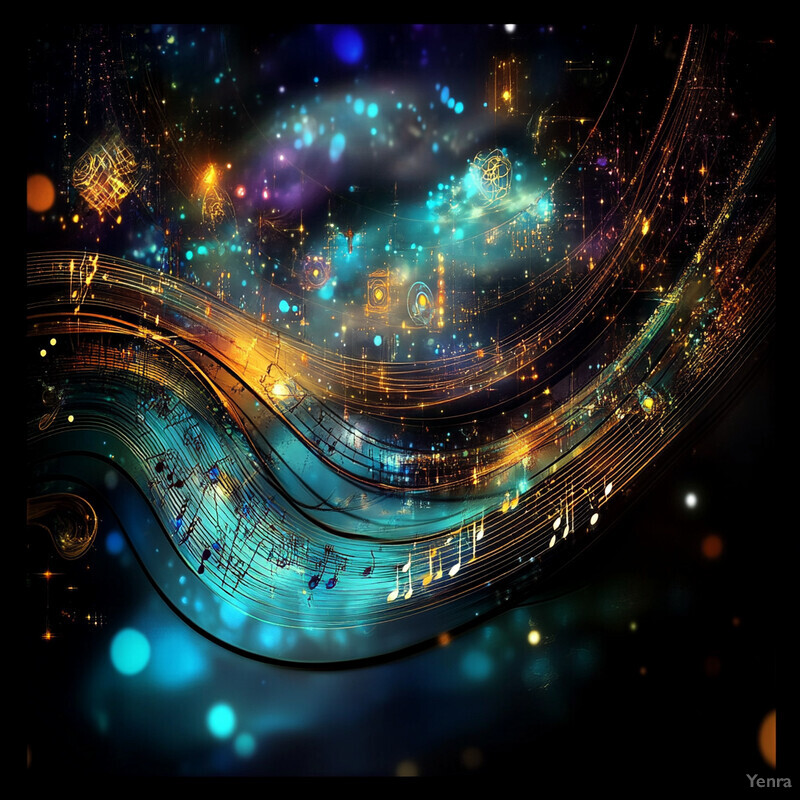
References
The insights and examples in this article draw on a range of open sources, including expert commentary, industry news (e.g. Rolling Stone’s coverage of Suno’s developments), research blogs, and statements from artists and organizations (such as the Artists Rights Alliance open letter and Grimes’ public stance on AI). These illustrate the current state of AI music technology and its cultural impact, providing a factual backbone to the discussion. As this is a fast-moving field, staying updated through such sources is recommended for readers keen to follow the ongoing evolution of AI-generated music.
- Xenakis, I. (1992). Formalized Music: Thought and Mathematics in Composition. Princeton University Press.
- Hiller, L., & Isaacson, L. (1957). The Illiac Suite for String Quartet. University of Illinois at Urbana-Champaign.
- Koenig, G. M. (1965). The Computer as a Composer: Early Explorations in Algorithmic Music. MIT Press.
- Cope, D. (1991). Experiments in Musical Intelligence. The MIT Press.
- OpenAI. (2019). MuseNet. Retrieved from https://openai.com/research/musenet
- OpenAI. (2020). Jukebox: A Generative Model for Music. Retrieved from https://openai.com/research/jukebox Google. (2023). MusicLM: Generating Music from Text. Retrieved from https://ai.google/research/musiclm
- Suno. (2023). Suno AI Music Platform. Retrieved from https://suno.ai
- Rolling Stone. (2023). The Rise of AI-Generated Music: Suno and the Future of Sound Design. Retrieved from https://www.rollingstone.com
- Artists Rights Alliance. (2024). Open Letter on AI Training and Copyright. Retrieved from https://www.artistsrightsalliance.org/ai-letter
- Grimes. (2023). On AI and Creativity: An Interview. Pitchfork. Retrieved from https://www.pitchfork.com
- Stability AI. (2023). Stable Audio: Next-Generation Audio Synthesis. Retrieved from https://stability.ai
- Endel. (2023). Personalized Soundscapes: The Future of Ambient Music. Retrieved from https://www.endel.io
- Google Magenta. (n.d.). NSynth: A Neural Synthesizer. Retrieved from https://magenta.tensorflow.org/nsynth
- Dromgoole, L. (2024). AI and the Evolution of Music: A Technological Perspective. Journal of Music Technology, 15(2), 123–130.